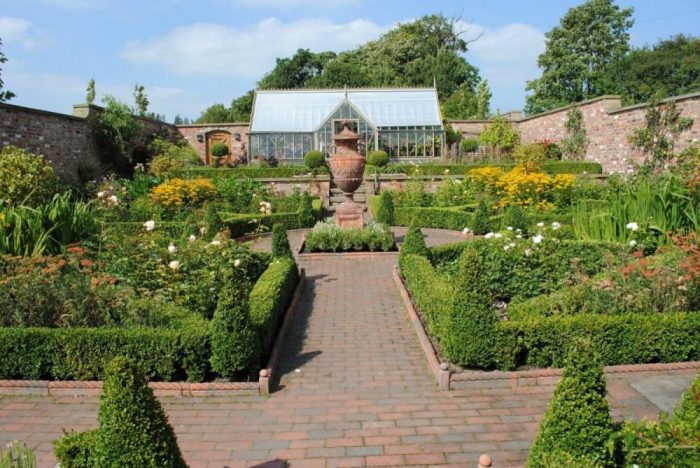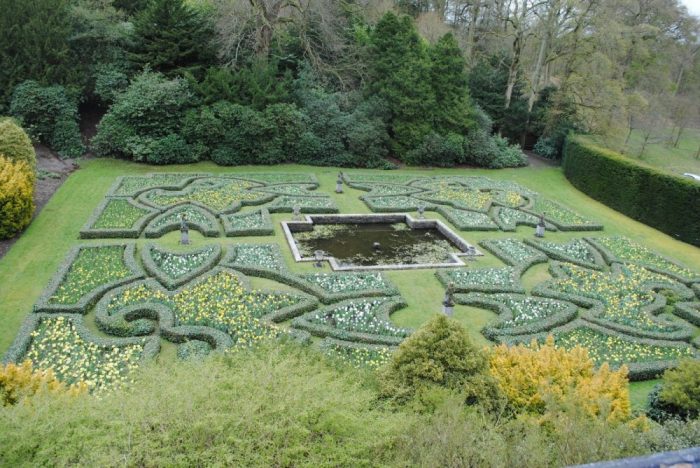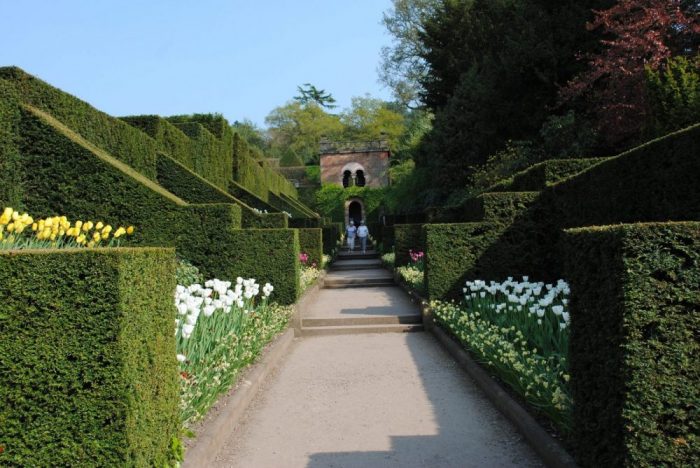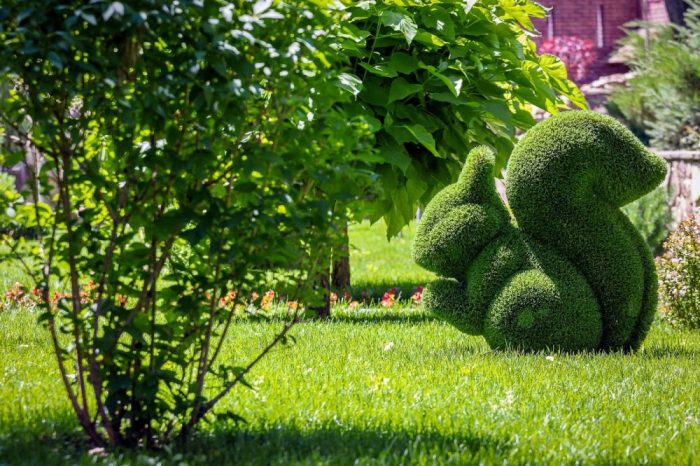Topiary is the art of clipping trees and bushes into shapes. Popular designs include spheres and cones, right through to complex geometric shapes and intricate animal forms.
Although you can buy ready-made topiaries in garden centres, they’re usually very expensive after spending at least 5 years being cultivated in a nursery. Creating your own topiary sculptures is fun, creative and rewarding. Plus, many gardeners say it’s a fantastic way to practice mindfulness.
Topiary is an ancient art with roots in both Ancient Rome and Ancient Egypt. However, it’s having a resurgence – perhaps due to the popularity of period dramas like Bridgerton and Downton Abbey.
Search data shows a steady increase of interest over the past five years – with Google searches up 50% compared to 2017.
Whether you have a 5,000-acre estate like Highclere Castle, or a balcony with a single olive tree, topiary is something you can have a go at. In this guide, we answer some of the most common questions about how to create a topiary yourself.
How to Make a Topiary
Looking to make a topiary of your own? Below we’ve laid out our top tips with help from topiary expert and author of Growing Topiary, Anthony Blagg.
Choose the Right Plant
The best types of topiary plants are ones that are tolerant of clipping and heavy pruning. You want something that grows relatively slowly, forming a compact, dense form after a few years. Traditionally, Yew and Boxwood plants are used – but there are many other types that can be shaped. You’ll also need to consider how big you want the finished product to be.
Most topiary trees tend to be evergreen as they give form to gardens during winter when nothing else is growing. However, formal topiary hedges sometimes use deciduous trees such as Beech or Hornbeam.

Never Clip Trees in Cold Weather
You should never trim topiaries during winter as this leaves them exposed to frost and risks damaging and disfiguring the tree. This is especially important for newly planted trees.
Use the Right Tools
To get started, all you need is a pair of scissors. Make sure you keep them solely for garden use though! As you progress, you may find you need to invest in secateurs, loppers and pruners.
-
Hedge shears are perfect for tackling larger trees, or for general shaping before you go in for the detail. They tend to have wishbone handles to give you maximum traction. Opt for lightweight ones for large projects to save your arm muscles.
-
Secateurs or pruners offer greater precision. They often have a curved blade and are designed with a v-spring which means they can be used with one hand.
-
Lopping shears are best for cutting through larger branches. Some of them feature telescopic handles to help you get those hard-to-reach spots.
Make Sure They’re Sharp
Whatever tools you use, one of the most important things when it comes to topiary is to make sure that they’re sharp. Blunt tools can result in tearing, making it easy for disease to get into the tree.

Go Slowly
It’s easy to get carried away when pruning a tree – but this can be dangerous. Over pruning can cause irreversible damage to the tree. Remember, you can always cut more off, but you can’t glue anything back on if you’ve been too rigorous!
Appraise From All Angles
Sometimes, you can get absorbed by the side of the tree you’re working on and forget about the rest. Regularly evaluate your topiary project from all sides while trimming so you don’t end up with a wonky masterpiece!
Don’t Over or Underwater
Browning is usually due to too little or too much water. Potted topiaries, especially those in terracotta pots, need watering more than trees planted directly into the soil. Some types of plant don’t like being waterlogged in winter too – so make sure you’re not planting in boggy soil.
Seek Out Inspiration
Stuck in a topiary rut? There’s tons of inspiration to check out both on and offline. Instagram is always a great place to start.
Consider a Topiary Frame
Topiary frames are mesh or wire structures that provide a guideline for shaping. They tend to be quite expensive and absolutely aren’t necessary. However, you might want to use one for your first project to use as a cutting guide until you gain confidence.
Protect your Topiaries in Winter
Most topiaries are planted directly into the ground or in extremely heavy pots, so it won’t be possible to move them inside for winter. Luckily, most evergreen trees such as Yew and Boxwood are quite happy in British winters.
During the early years of growth though, you may want to cover any delicate specimens with a garden fleece during cold spells – especially if your area is prone to prolonged frosts. This is recommended for Mediterranean plants such as Bay Laurel and Olive.

At Toolstation, we stock an extensive range of garden hand tools, including secateurs, loppers and pruners. And with over 550 branches nationwide, wherever you need to keep your garden in perfect condition all year round, the tools you need are always close at hand.
With special thanks to topiary expert and author of Growing Topiary – A Beginner’s Guide from the Ground Up, Anthony Blagg.

